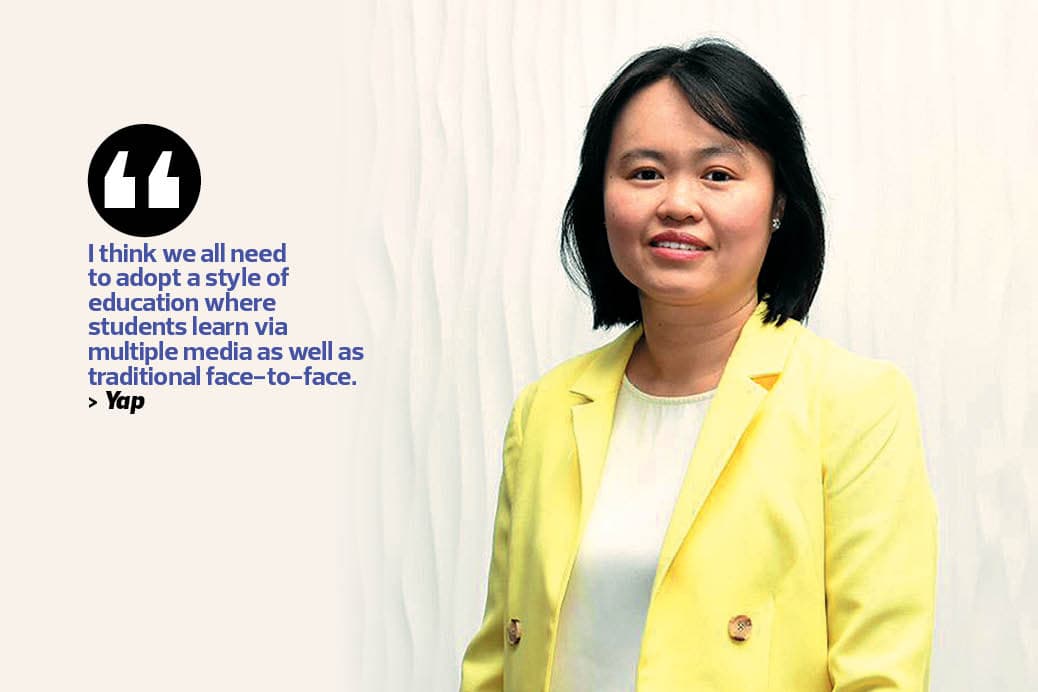
This article first appeared in Enterprise, The Edge Malaysia Weekly on July 13, 2020 - July 19, 2020
For a long time, distance learning was something taken up by full-time employees or individuals who lived in remote locations or were unable to attend classroom lectures. Today, due to the measures taken to contain the Covid-19 pandemic, this approach to learning is playing an integral role in ensuring that each student continues their education as per normal, says Elle Hosek, general manager of software firm Panopto Asia.
“Distance learning can be very difficult for both educators and students, especially when they do not have the right tools for it. That is why Panopto was developed. We help institutions of higher learning deliver instructional content in video formats and ensure that the solutions help with the need for pedagogical use cases,” she says.
Developed at Carnegie Mellon University, Panopto provides lecture recording, screencasting, video streaming and video content management software, which are often used in distance learning environments. Its users include Stanford University, the University of Rochester and Wharton School of the University of Pennsylvania in the US and Temasek Polytechnic in Singapore.
Over the past few years, Panopto has been mainly used to capture what happens in a classroom so that students are able to review the material when the class is over, says Hosek. “There are several benefits to this. For instance, the students can engage with the educators more, rather than frantically taking notes. It also helps them better understand what they have learnt.
“Typically, only 10% of the knowledge is retained after six months, if there had been no option to review what was learnt. These videos help bridge the gap.
“The educators can also do a ‘flipped classroom’, where they can create short videos of the core lecture. This way, the students can utilise the classroom time to apply what they have learnt rather than going through the theory again because typically, students learn better from doing compared with reading and listening. So, we believe videos play a critical supporting role for both educators and students.”
It can be quite challenging to get academics on board the idea of integrating such technologies in the classroom, says Hosek. However, this problem is mitigated by getting “power users” who welcome the technology to help their peers understand the benefits of using the software.
“Given the circumstances, we think that more educators will organically understand the need for using software such as Panopto to fill in pedagogical gaps [issues surrounding the methods and practices of teaching] ,” she says.
Caroline Yap, a senior teaching fellow of the Department of Accounting at Sunway University Business School, is a Panopto power user. She is in charge of handling the software’s in-house training for the university’s academic staff.
Yap says academics can be hard to convince, so the software champions have to demonstrate with real-life examples. “Now that distance learning is becoming the norm, educators have had no choice but to jump on the bandwagon. It is their responsibility to learn how to engage their students in this new environment.”
She says one of the best features of Panopto is the video analytics and reporting feature. This enables educators to get detailed reports on audience engagement and comprehensive insights into viewing behaviour for every video on their Panopto portal.
“I can track the viewing time of the videos to see which of my students viewed them the most, who hardly viewed them and who abandoned the videos halfway. The students are aware of this. When we analyse the data, we can assess certain information that we probably could not find in a traditional classroom setting,” says Yap.
“For example, if a student watches a video many times over, it may mean that he or she has difficulty understanding the topic being discussed. So, in the live session, I would explain that specific part more in-depth.
“After the class ends, the students are free to replay the live session video, slow it down or pause it to help them grasp the content better. They can also jot down notes, create bookmarks and use other tools to help them with the distance learning via the software.”
Educators should take advantage of how interactive software like Panopto can be, says Hosek. For example, they can build in quizzes every 10 minutes or embed websites when referencing resources. “It is really up to the individual educator’s creativity. They can experiment and personalise the classes according to their style of teaching or even what they think works best for the students to digest the information better,” she says.
Yap thinks that a more comprehensive blended learning approach will be the future of education, even after the pandemic subsides. “I think we all need to adopt a style of education where students learn via multiple media as well as traditional face-to-face. There has to be some sort of combination. For example, certain weeks we will ask them to watch a pre-recorded video before the physical class, and other weeks we will do a live distance learning session,” she says.
“Don’t get me wrong. I think face-to-face learning is still very important. But we cannot keep having classes where lecturers present on stage for two hours or more. Blended learning promotes interaction between the students and educators and allows the students to learn at their own pace.”
At press time, Sunway University’s classes were fully online. This is the perfect opportunity for educators to cultivate a culture of blended learning, says Yap. “We play a huge role in creating this culture. Of course, it will be difficult. But at least, the tool part has been sorted out because we have something like Panopto.”
Save by subscribing to us for your print and/or digital copy.
P/S: The Edge is also available on Apple's AppStore and Androids' Google Play.
